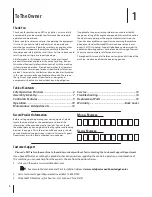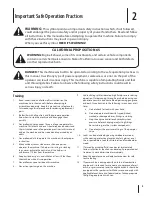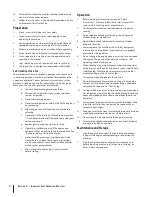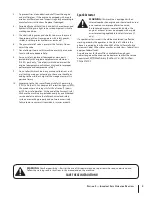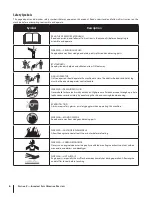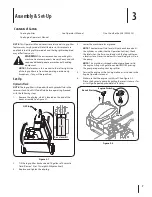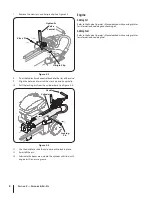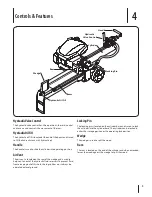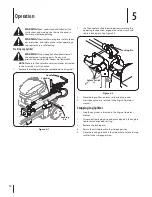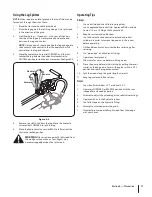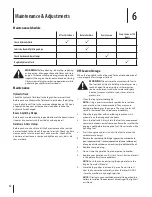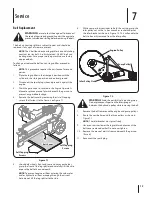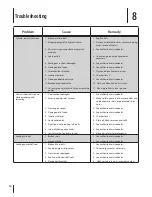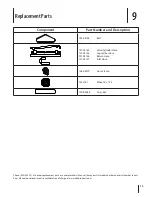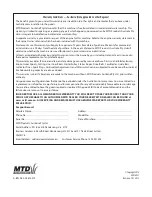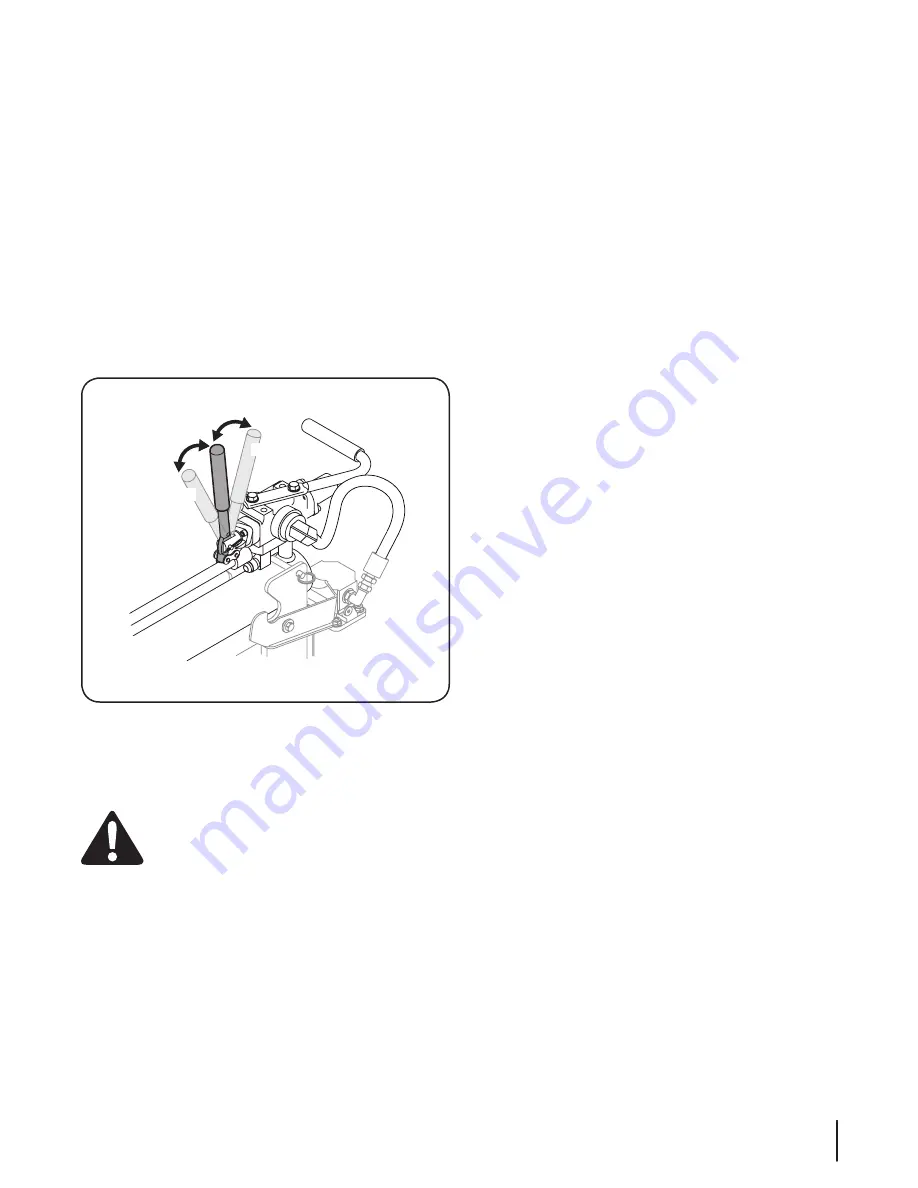
11
S
ection
5 — o
peration
Using the Log Splitter
NOTE:
Always operate on level ground, otherwise fluid may be
forced out through the air vent hole.
1.
Block the front and back of both wheels.
2.
Place the log against the splitting wedge. Only split wood
in the direction of the grain.
3.
Stabilize the log — if needed — with your left hand on
the side of the log only. Never place a hand on the end
between the log and the ram.
NOTE:
Only one adult should stabilize the log and operate
the hydraulic valve control so that the operator has full
control over the log and the ram.
4.
Move the hydraulic valve control FORWARD until the ram
touches the log. Release the hydraulic valve control to
NEUTRAL position to stop the ram movement. See Figure 5-3.
Forward
Neutral
Reverse
Figure 5-3
5.
Remove your left hand from the log. Move the hydraulic
valve control FORWARD to split the log.
6.
Move the hydraulic valve control BACK to fully retract the
ram to the locked position.
WARNING!
Never remove partially split wood from
the wedge with your hands. Your fingers may
become trapped between the split wood.
Operating Tips
Always:
1.
Use clean fluid and check fluid level regularly.
2.
Use an approved hydraulic fluid. Approved fluids include
Dexron® III, or a 10 Weight AW hydraulic oil.
3.
Keep hoses clear and unblocked.
4.
Use the hydraulic valve control to extend and retract
cylinder 4-6 cycles to remove trapped air in the system
before operating.
5.
Flush and clean hydraulic system before restarting after
servicing.
6.
Use “pipe dope” on all hydraulic fittings.
7.
Operate on level ground.
8.
Allow time for warm-up before splitting wood.
9.
Prime the pump before initial start-up by pulling the recoil
starter on the engine 4-6 times with engine switch in OFF
position and spark plug disconnected.
10. Split the wood along the grain (lengthwise) only.
11. Keep log centered in front of ram.
Never:
1.
Use when fluid is below 20° F or above 150° F.
2.
Operate in FORWARD or REVERSE position with the ram
stopped for extended an period.
3.
Attempt to adjust the unloading or the relief valve settings.
4.
Operate with air in the hydraulic system.
5.
Use Teflon tape on the hydraulic fittings.
6.
Attempt to cut wood across the grain.
7.
Attempt to remove partially split wood from the wedge
with your hands.


